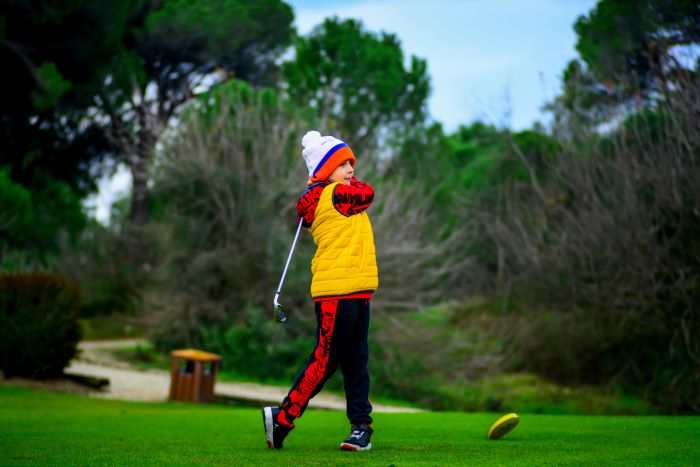
As temperatures drop and clouds turn grey, many golfers put their golf gear away, assuming that wet and cold weather is too harsh for a round of golf. While adverse weather itself can make the game less enjoyable, there’s another key factor that is often forgotten: how the weather affects your golf balls.
Whether you’re a seasoned pro or just starting out, understanding how the weather affects your golf ball’s performance is important if you want to improve your play all year round.
Cold Weather
Cold air is denser than warm air and therefore increases your golf ball’s drag and resistance, slowing down its flight. This can result in a loss of up to 15 yards of distance!
In cold weather, golf balls will also feel harder. This is because cold temperatures cause the core of the ball to harden, making it less responsive. When using a with less compression and a harder feel, it can be much harder to control spin and hit a solid shot, leading to inconsistent results.
This is why players may notice the ball feels ‘off’ in cold weather, even if their technique is good!
Hot Weather
Conversely, warm air is less dense which allows for the ball to fly further with less resistance than on a cold day. When temperatures rise, the materials inside the golf ball begin to expand and become more responsive. This leads to better compression and rebound off the clubface.
However, as hot dry weather turns to humidity, the distance of your shots can be dampened significantly…
Wet Weather
When a golf ball absorbs water, it becomes heavier and therefore requires more force to achieve the same distance as a dry ball. The dimples on a golf ball’s surface can also fill with water and mud in wet weather, increasing air resistance and slowing the ball down considerably.
This moisture on the surface of the ball also reduces the friction between the ball and the clubface, making clean contact with the ball much harder and leading to less backspin.
Windy Weather
Wind can significantly affect the flight of your golf ball and the accuracy of your shots. For example, a headwind can cause your shots to fall short, whereas a tailwind can extend your ball’s flight by several yards!
Some golf experts have come up with a wind formula to help combat this:
- Headwinds: Add the wind speed in miles per hour to the distance the ball will travel. For example, a 10mph headwind will add 10 yards to the distance.
- Tailwinds: Subtract half the wind speed in mph from the distance the ball will travel. For example, a 10mph tailwind will subtract 5 yards from the distance.
Tips for Tackling the Weather
- Store your balls inside: Try to keep your golf balls at room temperature and avoid leaving them in your car boot.
- Rotate your balls: If you’re playing a game in cold conditions, try to rotate your balls for each hole and keep the unused one in a warm pocket.
- Adjust your expectations: Be aware that your shots may not go as far in cold, wet and windy weather - so adjust your swing accordingly!
- Choose the right ball: Try to choose a golf ball to play with that is ideal for the specific weather conditions.
- Use a customised ball: The dark skies on cold winter days can make finding your white golf ball almost impossible. This time of year is the perfect time to stock up on coloured and customised golf balls that will be easy to find, rain, snow or shine!
At gimmeballs, we offer a range of different coloured golf balls and personalisation options.
Shop Personalised Golf Balls Shop Coloured Golf Balls
If you have any questions about our golf ball customisation services, please don’t hesitate to get in touch and a member of our team will be happy to help.